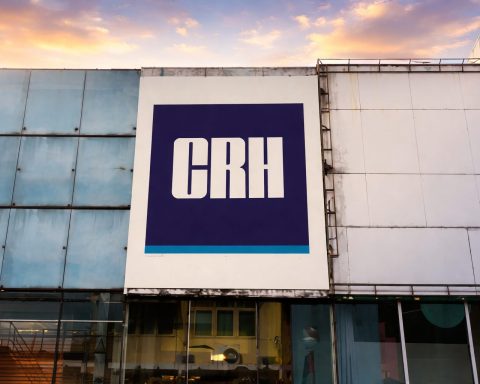At a glance (as of 19:55 UTC): Meta Platforms (NASDAQ: META) is trading around the mid‑$630s and modestly higher intraday after a sharp post‑earnings slide last week. The bounce comes amid new scrutiny of Instagram’s teen‑safety labels, ongoing debate over Meta’s record AI spending, and lingering regulatory actions in Europe and India. [1]
Key takeaways
- Shares stabilize today after a four‑day skid that erased more than $300B in market value following Meta’s plan to lift 2025 capex to $70–$72B and spend even more in 2026 for AI data centers. [2]
- Instagram “PG‑13” backlash: The Motion Picture Association sent Meta a cease‑and‑desist, calling the “PG‑13” label on teen filters misleading and seeking an immediate stop. Meta says it never claimed official certification and hopes to work with the MPA. [3]
- EU & France pressure: France’s equalities watchdog ruled Facebook job‑ad delivery was sexist; Meta disputes the finding. Coverage and commentary kept the issue in the news cycle today. [4]
- India ruling: An Indian appeals tribunal lifted a WhatsApp data‑sharing ban but upheld a fine, a mixed outcome in Meta’s largest market by users. [5]
- Balance‑sheet moves: After earnings, Meta lined up a multi‑part bond sale widely reported at $25–$30B to help finance AI infrastructure. [6]
What moved META today
After last week’s sell‑off, broader U.S. markets steadied this morning, helping large‑cap tech rebound and giving META a lift. The stock’s intraday gains, however, came as investors weighed fresh risk headlines around teen safety labels and ad‑delivery algorithms. [7]
The latest Meta headlines on Nov. 5, 2025
- MPA vs. Instagram’s “PG‑13” — The Motion Picture Association sent a cease‑and‑desist demanding Meta stop using “PG‑13” to describe teen content filters, arguing the comparison is “misleading” and trades on a registered certification mark. Meta says it never implied an official rating and wants to engage with MPA. [8]
- “Metaverse déjà vu?” — A morning column noted META fell nearly 17% in four sessions after the AI capex update, drawing parallels with 2022’s metaverse‑spending rout; some analysts even downgraded the stock on capex concerns. [9]
- France’s equality watchdog — The Défenseur des droits said Facebook’s job‑ad distribution created indirect sex discrimination; Meta rejects the ruling. Coverage today kept the story front‑and‑center. [10]
Earnings & spending context (still setting the tone)
In Q3 2025, Meta posted $51.2B in revenue (+26% YoY) and raised full‑year capex guidance to $70–$72B. Reported profit was hit by a ~$16B one‑time U.S. tax charge tied to the administration’s recent tax law; excluding it, net income would have risen sharply. Management also flagged “notably larger” capex in 2026 and guided Q4 revenue to $56–$59B. These numbers underpinned both last week’s sell‑off and today’s cautious rebound. [11]
Funding the AI build‑out
To finance data‑center scale‑up and AI compute, Meta is tapping the bond market. Reports indicate a $25–$30B multi‑tranche issuance (5‑ to 40‑year maturities), following management’s message that AI spending will step up again next year. Today’s recovery arrives with that financing backdrop still top of mind for credit and equity investors alike. [12]
Regulatory & policy watch
- Teen safety labels: The MPA’s letter escalates pressure on Instagram’s default teen settings rolled out in October (which Meta had described as being “guided by” PG‑13 standards). Expect ongoing legal/PR wrangling over how platforms describe age‑appropriateness. [13]
- Algorithmic bias in ads: France’s ruling adds to years of scrutiny over ad delivery fairness on Facebook; Meta disputes the finding and process. Investors are watching for any mandated product changes that could affect ad targeting. [14]
- India (WhatsApp): The NCLAT removed the ban on user‑data sharing across Meta apps but kept a monetary penalty — a nuanced outcome but one that reduces operational friction in a key growth market. [15]
Why it matters for the stock
- Spending vs. payoff: The crux is whether AI investment can expand ad yield, unlock messaging monetization (WhatsApp/Threads), and improve time‑spent enough to justify capex — without the enterprise cloud leverage peers enjoy. That debate is driving day‑to‑day price action. [16]
- Balance‑sheet capacity: A large bond sale paired with still‑strong operating cash flow gives Meta room to build. But higher fixed charges and capex will keep free cash flow sensitivity in focus each quarter. [17]
- Regulatory friction: Policy flashpoints (teen safety, ad fairness, privacy) can force product tweaks and add compliance cost — modest near‑term earnings risk, but important to watch because they touch Meta’s targeting and brand safety narratives. [18]
What to watch next
- Capex cadence in 2026 vs. revenue/FCF trajectory. [19]
- Debt pricing and demand for the pending bond tranches. [20]
- Any remediation commitments Meta makes in response to the MPA letter and the French watchdog decision. [21]
Methodology & timestamp: Market data shown in the chart and snapshot reflect LSEG/market prices as of Wed, Nov. 5, 2025, 19:55 UTC. News items were verified from primary outlets on Nov. 5, 2025, with context from coverage over the past week for completeness. [22]
This article is for information only and is not investment advice.
References
1. www.latimes.com, 2. www.latimes.com, 3. www.reuters.com, 4. www.theguardian.com, 5. www.reuters.com, 6. www.reuters.com, 7. www.wsj.com, 8. www.reuters.com, 9. www.latimes.com, 10. www.theguardian.com, 11. www.reuters.com, 12. www.reuters.com, 13. www.reuters.com, 14. www.theguardian.com, 15. www.reuters.com, 16. www.latimes.com, 17. www.reuters.com, 18. www.reuters.com, 19. www.reuters.com, 20. www.reuters.com, 21. www.reuters.com, 22. www.reuters.com







